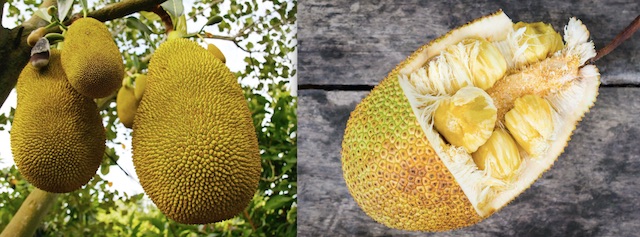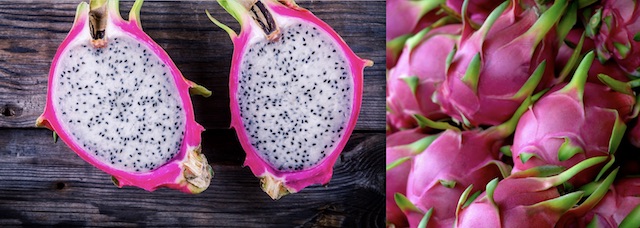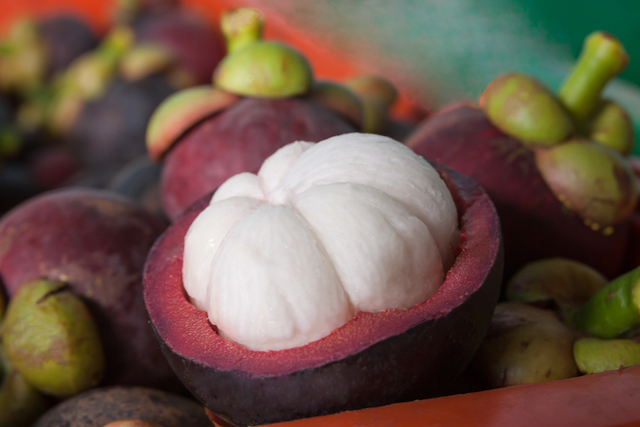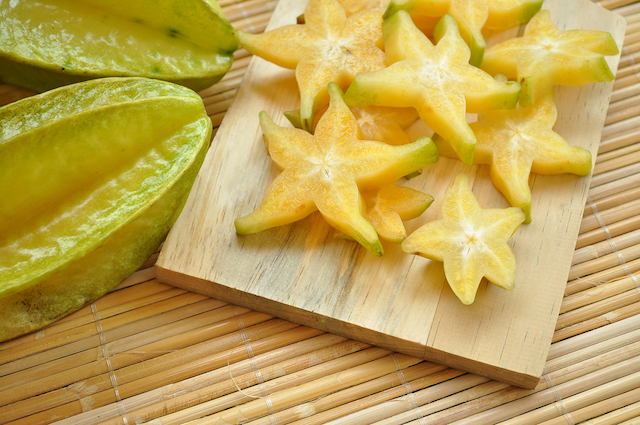What tropical fruit is that?

It’s summer in the southern hemisphere and that’s when we get an abundance of tropical fruits. More and more exotic-looking fruits are taking their place next to the well-known and popular mangoes, paw-paws and pineapples. But what are they? What do they taste like? What’s their nutrition profile? And how do you know if they’re ripe?
There’s a surprising number of tropical fruits grown in Australia. Many I’d never heard of before such as Achacha, Garcinia humilis (previously known as Rheedia laterifolia) and Jaboticaba Myrciaria cauliflora.
However, in this post I’m going to stick to the ones you’re most likely to see in stores and if you’re interested to know about the others then head to this website to check them out. Let’s take a look...
Jackfruit

Jackfruit originated in India and is the largest tree-borne fruit in the world - it can grow up to 40kg in weight! While it may look like Durian, it is different and definitely doesn’t smell like Durian! If you decide to give it a try, be warned that when you cut into it, it releases latex. This can be dangerous if you have a latex allergy and just plain inconvenient if you haven’t prepared yourself first. The latex will stick to everything – you, your cutting boards, your knives etc. To avoid this it is advisable to coat your hands, knives and other utensils in cooking oil to prevent it sticking.
Jackfruit flavour has been said to resemble a mixture of banana and pineapple. I’ve never tasted one but if that’s the case I might just forgo the latex experience and stick with the more usual bananas and pineapples. However, others say it is unbelievably delicious and tastes like nothing else. Some even use it as a vegetarian alternative to barbecued pulled pork!
When the fruit is ripe, the spines will give if pushed and it will have a sweet aroma. According to some sites, you can store the flesh in the fridge for up to seven days or freeze it for more than two months.
Jackfruit has 397 kJ/95 Cal per 100 g but it also contains valuable micronutrients such as selenium and copper and is a good source of the vitamin A precursor, beta-carotene, and vitamin C as well as the minerals calcium and iron. It also contains a lot of fibre and this reduces its Glycaemic Load.
Rambutan

It’s quite a striking looking fruit with its bright red spines and it originates in Malaysia and the Indonesian island of Sumatra. When buying Rambutan, look for ones that are firm and brightly coloured.
Again I have never tasted one myself but the Australian Tropical Fruits website says they have a “sweet flesh with a mild acid flavour”. I have also seen the flavour described as “sweet and sour like a grape”. Its flesh looks like a lychee’s.
Rambutans provide a good source of vitamin C and calcium, and reasonable amounts of niacin, iron, protein and fibre.
Dragon Fruit

Also called Pitaya, these unusual looking fruits come from a cactus and are bright pink and green. The flavour is described as melon-like, sweet and slightly acidic. The fruit is ripe when it gives a little when gently squeezed. Dragon fruit is a rich source of vitamin C and dietary fibre.
Persimmon

If you live or have relatives from Queensland, I bet you and they know and remember these soft fruit as they were introduced there way back in the 1800s. These have been around much longer than the fruit listed above. Persimmons originated in Japan and China. Interestingly there are two types of Persimmons – astringent and non-astringent. I think the one we ate with an overseas guest was the former as we all had identical pursed lip grimaces when we bit into it.
Persimmons are a good source of the vitamin A precursor, beta-carotene, and vitamin C, as well as containing iron, calcium, and manganese.
Mangosteen

This fruit came from south-east Asia and is known today as the ‘Queen of Tropical Fruits’. It has a leathery skin which is deep purple when the fruit is ripe. Inside you’ll find five to seven white segments. The flavour is subtle, sweet and mildly acidic.
Mangosteens don’t ripen after picking so choose carefully. A deep purple skin and a fresh green stem indicate a good fruit. Nutritionally, they are high in calcium, phosphorus and vitamins B and C.
Star Fruit

Also called Carambola, the star fruit has an attractive five pointed star shape when sliced. It comes originally from Indonesia but like the other fruit mentioned in this post is now grown in Queensland. It’s flesh is said to be crisp and refreshing with the green ones being more acid and the yellow skinned ones sweeter. They look stunning on a fruit platter or cheese board.
Star fruit are super rich in Vitamin C, with some beta-carotene and a good dose of fibre.
My New Year’s Resolution
I have to admit to having been a bit of a coward with regards to strange-looking new fruits. That’s what prompted me to research them. So my New Year’s Resolution for 2018 is to try some of these exotic tropical fruits for myself – though I still think I’ll pass on the latex-laden Jackfruit. (Unless somebody else does the hard work, of course.)
Want to know more?
Head to the Australian Tropical Foods website for more information.
Thanks to Munaiba Khan, a retired naturopath with an interest in nutrition for this post.



